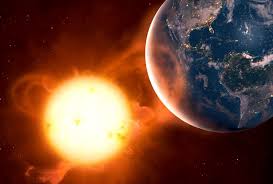Solar activity refers to the changes in the Sun’s energy output and magnetic field. These changes can have significant impacts on Earth and the entire solar system.
Types of Solar Activity
- Sunspots: Dark, cooler regions on the Sun’s surface that are associated with intense magnetic activity.
- Solar Flares: Powerful bursts of electromagnetic radiation emitted from the Sun’s surface.
- Coronal Mass Ejections (CMEs): Massive clouds of plasma and magnetic field lines ejected from the Sun’s corona.
- Solar Prominences: Large loops of gas that extend from the Sun’s surface.
Solar Cycle
The Sun’s activity follows an approximately 11-year cycle, with periods of high and low activity. During periods of high activity, there are more sunspots, solar flares, and CMEs.
Impacts of Solar Activity on Earth
- Geomagnetic Storms: CMEs can interact with Earth’s magnetic field, causing geomagnetic storms. These storms can disrupt communications, power grids, and satellite operations.
- Auroras: Geomagnetic storms can produce stunning displays of light known as auroras, which are visible in high-latitude regions.
- Radiation Hazards: Solar activity can increase the amount of radiation reaching Earth, which can pose a risk to astronauts and satellites.
Space Weather Forecasting
Scientists constantly monitor the Sun for signs of solar activity and use models to predict the potential impacts of space weather events. This information is essential for protecting critical infrastructure and ensuring the safety of astronauts and satellites.
Solar activity is a complex phenomenon that can have significant consequences on Earth and the solar system. By understanding and predicting solar activity, we can better prepare for and mitigate its effects.
Would you like to learn more about a specific type of solar activity or its impacts on Earth?



